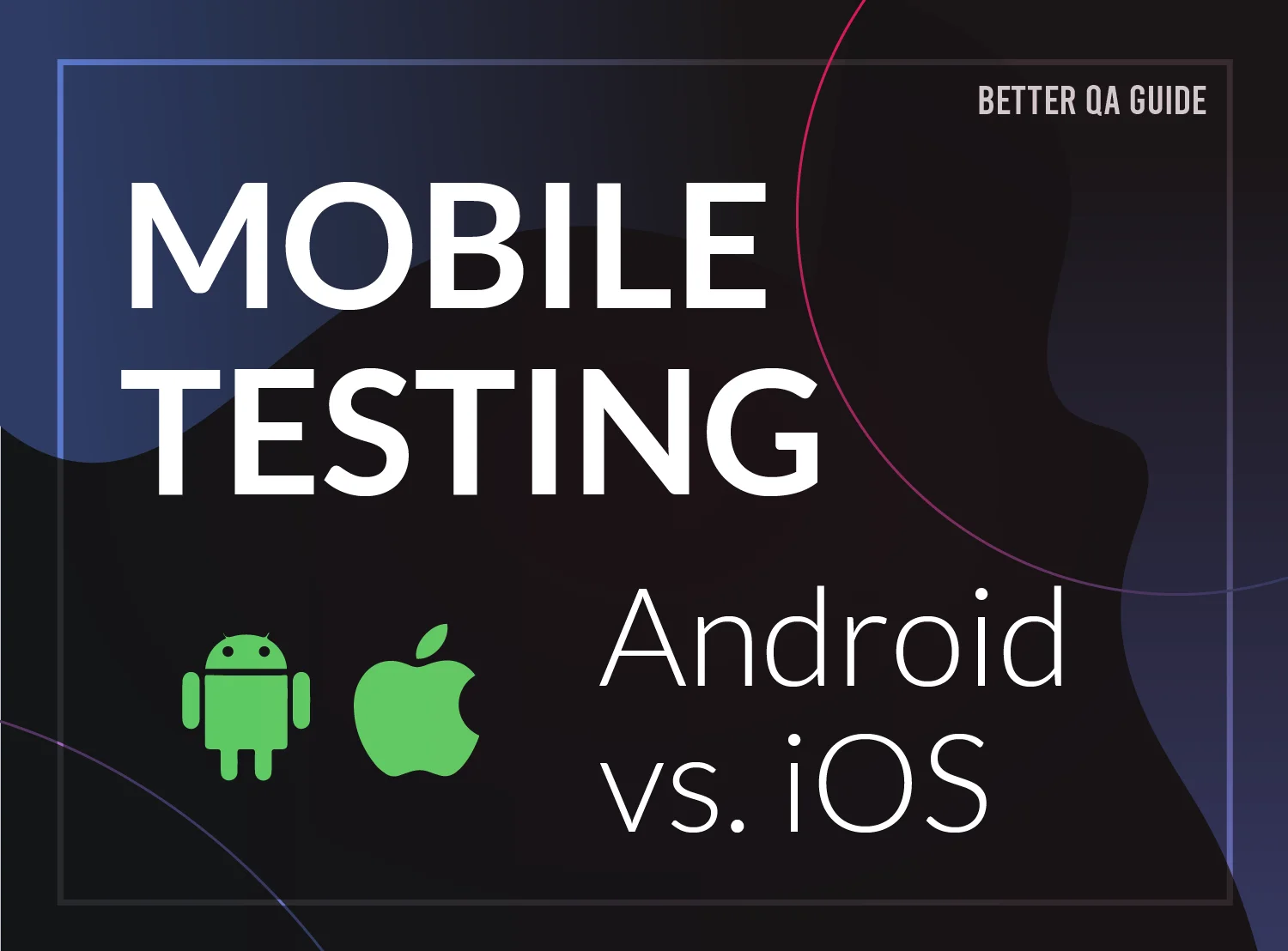Introduction
For years, companies and people have gravitated towards mobile devices for their online activities. With this growing trend, software development companies have adopted a mobile-first approach. Software testing has also taken a turn because of the growing mobile-centered market.
Mobile testing is crucial for conducting business today. Mobile testing refers to validating a mobile app, either iOS or Android, for its functionality, usability, and consistency before it is released to the public.
The testing procedures of Apple and Android are often different. In this article, we will compare the major differences between the two.
Open versus Closed System
Apple devices use a closed system, which cannot be customized to the same extent as a Linux-based operating system. More specifically, the core component for all iOS devices is XNU. Most of the code is written in either Objective-C or C/C++. If you want to create an App for iOS, it has to be written to adhere to strict standards and approved by Apple before being released to the public.
On the other hand, Android uses an open system. The source code is made available by Google under open-source licenses. Most of the time, it uses a Linux OS as the core. Any developer that wants to create an app can follow Google’s general rules. Native Android applications are developed using Java and the development frameworks (e.g., Kotlin) that can leverage Android’s Java API framework.
Device Variety
Android updates experience a longer deployment cycle because there are many different devices. Testing whether the new functionality and software will work smoothly on various Android devices takes a long time.
iOS has a single manufacturer; hence the testing and deployment cycle is faster.
Device Screen Resolution & Layouts
Because of the diversity of Android devices, they come in many different layouts and screen sizes. More layouts and sizes increase the probability of bugs and app inaccuracies, thus making testing more complicated. However, iOS devices come in standard screen sizes, making testing easier and faster.
Software upgrades and Backward Compatibility
As mentioned before, Android OS devices come in all shapes and sizes. Because of this, when there is a software update, not all Android devices will receive the update simultaneously compared to iOS devices, where all users receive the update at the same time.
There are many users who still use older versions of Android devices. To ensure app functionality for older devices, the QA team must also test with Android APIs using older versions.
iOS devices have fewer older versions. Thus, there is less time required to test these devices.
App Information Security
62% of users uninstall an app if they experience mobile app crashes, freezes, or errors. Users tend to trust apps that work smoothly and safely.
Testing an application with so many devices and various operating systems to consider is a complex task. Testers must ensure that the app is safe from malicious online attacks. Any unresolved security issues from the app’s earlier version should be addressed as soon as possible using an update to prevent any breaches in security.
App Availability and Publishing
iOS devices use the App Store, while Android devices use Google Play. For an app to enter the App Store, it must comply with strict standards and be approved by Apple. iOS testers spend a lot of time testing an app to ensure it meets Apple’s strict guidelines.
Compared to Apple, as soon as the app is available, it becomes downloadable on Google Play Store. Not all the Apps available in Google Play Store are checked by Google. Google only looks for malicious content. Therefore, dangerous apps remain in the store until someone becomes a victim.
To sum up, testing various devices with different hardware, software specs, and screen sizes can be challenging. Often, companies will create an app that runs on iOS and Android.
Testing on both platforms requires an increased number of test cases, and if you choose automated testing with a tool that does not support cross-platform testing, that will result in duplicating the test scripts, and nobody wants that. You can use a mobile testing automated framework such as Appium that will support cross-platform testing that can help reduce the number of test scripts needed for testing to support both platforms.
Considering these aspects, testers should use a reliable and efficient mobile app testing strategy. It should be taken into consideration the different target devices and the many operating systems. Security should be a top priority, whether an iOS or Android app.
Stay Updated with the Latest in QA
The world of software testing and quality assurance is ever-evolving. To stay abreast of the latest methodologies, tools, and best practices, bookmark our blog. We’re committed to providing in-depth insights, expert opinions, and trend analysis that can help you refine your software quality processes.
Delve deeper into a range of specialized services we offer, tailored to meet the diverse needs of modern businesses. As well, hear what our clients have to say about us on Clutch!
